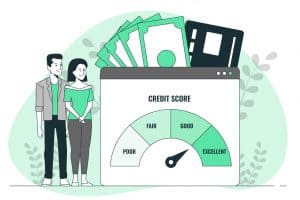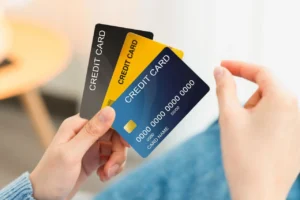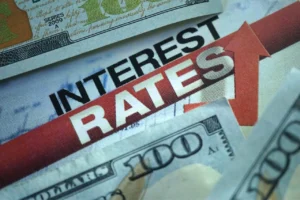Struggling with high-interest debt that has put you in a downward financial spiral? Bankruptcy may seem like the only way out of this mess, but there’s an alternative solution – Debt Repayment Scheme (DRS).
In this article we take a look at the workings and benefits of DRS. Find out how it can help turn your situation around, allowing for greater control over your finances once more.
What Is a Debt Repayment Scheme (DRS)?
The Debt Repayment Scheme (DRS) is Singapore’s alternative for its citizens at the brink of filing for bankruptcy due to debt. In other words, it’s a pre-bankruptcy procedure favorable for both the debtor and the creditor.
The DRS is governed by Part 15 of the Insolvency, Restructuring, and Dissolution Act (IRDA) 2018 and IRDA Regulations 2020. It prevents unsecured creditors from taking legal action against the debtor unless the court grants leave. The DRS is primarily ideal for those overburdened by their financial problems and less likely to pay back their obligations.
When the Debt Repayment Scheme applies, the individual is given a fixed period of at most five years to settle their loans in a structured and affordable manner. Once the debtor overcomes the financial obligations with the creditors, a fresh start is granted thereafter. In other words, you’ll be debt-free!
How Does It Work?
Unlike the Debt Consolidation Plan (DCP), the Debt Repayment Scheme isn’t something you can self-apply in Singapore. Instead, a bankruptcy application should be filed against you either by yourself or the creditor. The Ministry of Law’s Insolvency Office then refers the bankruptcy application to its Official Assignee (OA).
The OA then determines the DRS’s suitability to the debtor’s situation and sees if the criteria are met. Once you have a DRS status, the debtor and the creditor work with the OA to establish a repayment plan. One of the main goals of the DRS is to have a resolution that protects the interests of both parties.
Also, you will have to make monthly installments under the Debt Repayment Plan (DRP) with a repayment period of no more than five years. Once it’s successful, a Certificate of Completion is given, clearing you from all outstanding debts except for:
- Debts that were not disclosed to the Official Assignee.
- Debts with no corresponding proof applied by the creditor.
On another note, a bankruptcy application is deemed eligible only if your outstanding unsecured debt does not exceed S$150,000.

Why Apply for the Debt Repayment Scheme?
Applying for the Debt Repayment Scheme is an ideal option than immediately filing for bankruptcy. This way, you can avoid the stigma associated with bankruptcy, especially its financial disadvantages.
The DRS can give you support, such as free one-on-one debt help and credit education. Most of all, hard-to-settle personal loan can be resolved with the help of a DRS, allowing you peace of mind at night with less stress about your finances.
Debt Repayment Scheme: How to Apply
For you to apply for the Debt Repayment Scheme, you have to apply for a bankruptcy application with the court. That is unless your creditor has already taken out bankruptcy proceedings against you.
Further, the court will adjourn the bankruptcy proceedings for around six months, directing you to the Insolvency Office. This is where the Official Assignee is designated to assess whether you are eligible for the DRS.
Who Qualifies for the Debt Repayment Scheme?
A debtor qualifies for a Debt Repayment Scheme if their outstanding unsecured debt amount does not go beyond S$150,000.
In addition, below lists the other areas of the DRS eligibility criteria:
- You’re gainfully employed and earning a regular monthly income
- You are not a sole proprietor or a partner of any firm or business
- You have not been bankrupt or have been under the DRS for the last five years
- You have not been subjected to a court-based arrangement or voluntary arrangement in the past five years
Can a Debtor Apply Directly for a Debt Repayment Scheme?
It’s not possible to directly apply for the Debt Repayment Scheme if you are the debtor. The process requires you or the creditor to file a bankruptcy application first. The Official Assignee will then assess this, determining if the DRS is suits your situation.
Aside from that, you also need to meet the set criteria to determine whether your DRS will be granted.
What Happens if You’re Eligible for the Debt Repayment Scheme?
Supposed it was approved, you will be informed to present the following documents online through a Notice of Introduction on DRS & Filing of Statement of Affairs:
- Debt Repayment Plan
- Statement of financial affairs
- Supporting documents as per Annex B
- Regular income and expenditure statements
You will be given a 14-day period to submit all the supporting documents and view the Introductory video. Once the online submission has been verified and accepted by the DRS administrator, you must pay S$350 as the initial fee through the e-Collection Portal.
The next step is inviting your creditors to a meeting held in the office. Yet before that, you will be obliged to pay a S$250 fee. Your presence is compulsory in meeting your creditors. If you cannot do so, you must inform the office three days before the meeting.
A no-show can result in your DRS status getting rejected or if you don’t have a valid reason and the permission of the OA to be absent on the set day. In the meeting, what will be discussed with you and the creditors is the Debt Repayment Plan. The administrators will chair the meeting and arrive at a resolution regarding the following:
- Monthly installment
- The terms and conditions
The outcome of your assessment and the Official Assignee’s decision will then be provided to you within seven days after the meeting.
What Happens if You’re Not Eligible for the Debt Repayment Scheme?
Suppose the debtor fails to comply with the instructions made by the Official Assignee and does not meet the eligibility criteria. In that case, you will be deemed unfit for the Debt Repayment Scheme. The OA will inform the High Court about this, and your bankruptcy proceedings will continue.
Further, the fees you have paid during the assessment period are non-refundable.
The OA or the Private-trustee-in-Bankruptcy (PTIB) will be assigned to become in charge of the debtor’s assets from your estate. These will be sold, and the amount will be used to repay creditors.
The Debtor’s Responsibilities Under the Debt Repayment Scheme
There are several things a debtor should adhere to when under the Debt Repayment Scheme. Complying with all the set obligations will prevent your DRS status from getting terminated.
Below lists all the debtor’s responsibilities under the DRS:
- Disclose the debtor’s property to the Official Assignee.
- Disclose to the Official Assignee any of the debtor’s assets disposal within the five years before the bankruptcy proceedings started against you, before the completion date of the Debt Repayment Scheme.
- Attend all meetings with your creditors as arranged by the Official Assignee.
- Only enter further debt that exceeds S$1,000 without disclosing to the financial institutions that you’re under the DRS.
- Regularly keep the Official Assignee updated on your residence address and other contact details.
- Inform the Official Assignee should there be any change in your employment details or status.
- Provide accurate and honest information relating to the Debt Repayment Scheme.
- Ensure all proof of debts filed by the creditors is accurate and correct.
- Cohere with the terms and conditions made for the approved Debt Repayment Plan.
What Happens if I Successfully Completed the Debt Repayment Scheme?
If you have successfully repaid and completed the proposed repayment plan, the Official Assignee will issue you a Certificate of Completion. The Certificate of Completion will release you from all the debts owed provable under the Debt Repayment Scheme.
However, suppose the Official Assignee has grounds indicating that you have not complied with your pre-and post-DRS approval duties. In that case, the OA has all the rights to issue you a Revocation of your Certificate of Completion.
When this happens, you will become liable for all debts provable from which you would have been released.
Consequences of Failure to Comply With the Obligations Under the Debt Repayment Scheme
Failure to comply with your obligations under the Debt Repayment Scheme will mean receiving a Certificate of Failure. Creditors can initiate fresh bankruptcy proceedings against you.
You will face travel restrictions if declared bankrupt and listed on the bankruptcy register. You’d need written consent from the appropriate office if traveling abroad is necessary.
All the Costs Involved With Debt Repayment Schemes
Since an Official Assignee is administering your case, expect to pay administrative fees for the Debt Repayment Scheme. This includes $300 as the first annual fee for the initial two years and $350 for the next three years.
On top of the fees payable, you must also pay $250 for the meeting with your creditors. Further, there is a 5 percent fee of the total collected amount to the Official Assignee and another 3 percent fee to the OA in exchange for distributing dividends to all your creditors.
See Also: How to Pay Credit Card Bills
Advantages and Disadvantages of the Debt Repayment Scheme
Advantages
- You only need to pay once monthly. You no longer have to make multiple payments to your creditors nor keep tabs on when to pay who. Instead, your credit counseling agency will distribute the payment to the creditors on your behalf.
- Pay on lower interest rates. In settling your debt, your credit counseling agency may negotiate with your creditors to lower their interest rates. This way, you’re more likely to pay back the principal amount without stressing over the interest.
- You can save a lot of money. With lower interest rates and other negotiated terms, the debtor can save huge amounts of money. On top of that, commitment to monthly repayments would enable them to clear their debts within 3 to 5 years.
Disadvantages
- You are discouraged from using your credit cards. With debt relief in the works, the debtor’s credit cards must be closed to ensure you’re not making any more debts. If you have a credit card not included in the Debt Management Plan (DMP), you’ll be advised to close it.
- You have required consistent monthly payments. For you to experience lower interest rates, low monthly payments, and more, the DMP would require you to be consistent with your monthly payments. Debtors should be committed to making a financial change for the DRS to work.
- It’s not guaranteed that your creditors will participate. It is not common for a creditor not to participate in the DMP, but it’s still possible. Regardless of the terms and conditions the credit counseling agency proposes, it’s up to the creditors whether to be on board.
Closing
The Debt Repayment Scheme is a well-regulated plan to help you settle your accounts with your creditors. DRS can be a better alternative than directly declaring bankruptcy when facing dire financial situations, such as being unable to pay for basic living expenses.
Key takeaways
- The Debt Repayment Scheme primarily applies to debtors whose debts do not exceed S$150,000.
- To apply for the DRS, the debtor or the creditor must file a bankruptcy application in the Higher Courts.
- There is always no guarantee that a debtor is eligible for the DRS, as this depends on the OA’s findings regarding the debtor’s financial case.
Need a loan? Instant Loan can help with old debts if you consider debt consolidation from trusted banks in Singapore. With its advanced algorithm, you’ll get connected to the top three reliable banks with the best loan offers. Get three loan quotes for free!








